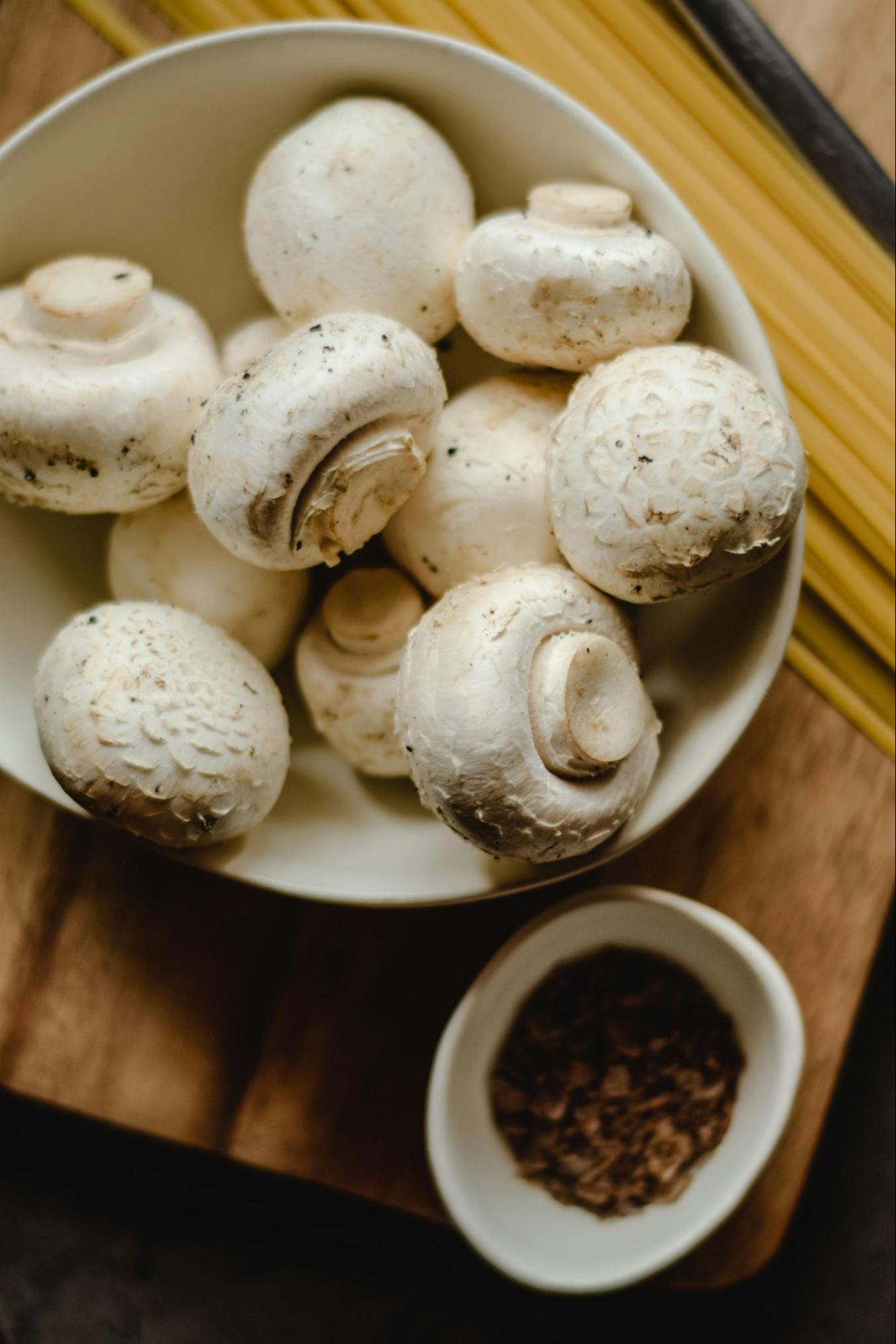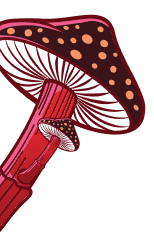Cordyceps is a fascinating fungus that has been used for centuries in traditional Chinese medicine. With its unique properties and potential health benefits, it has become a staple in the world of natural remedies. In this article, we will delve into the origin of cordyceps, its historical use, cultivation methods, health benefits, scientific research, dietary incorporation, and potential side effects. So, let's embark on a journey to unlock the secrets of this remarkable medicinal mushroom.
Understanding the Origin of Cordyceps
Before we delve deeper into cordyceps, it's important to understand its origin. Cordyceps is a parasitic fungus that primarily infects insects, particularly caterpillars. It belongs to the Ophiocordyceps genus and is known for its unique and complex life cycle.
Cordyceps is a fascinating organism that has captured the attention of scientists and researchers around the world. Its ability to manipulate the behavior of its insect hosts is a subject of much intrigue. Once infected, the cordyceps fungus takes control of the host's central nervous system, compelling it to climb to a high vantage point before ultimately killing it. This behavior is crucial for the fungus's reproductive cycle, as it allows its spores to be dispersed over a wide area.
The Historical Use of Cordyceps in Chinese Medicine
The use of cordyceps in Chinese medicine dates back thousands of years. It has been highly valued for its medicinal properties and was traditionally used to address a wide array of health issues, including respiratory conditions, kidney problems, and fatigue.
Ancient Chinese medical texts praise cordyceps for their ability to tonify the kidney and lung meridians, improve respiratory function, and increase vitality. It was often reserved for use by emperors and the nobility due to its rarity and perceived health benefits. Today, cordyceps continues to be a popular ingredient in traditional Chinese medicine formulations and health supplements.
The Natural Habitat and Cultivation of Cordyceps
In its natural habitat, cordyceps grows in the high-altitude regions of the Tibetan Plateau and the Himalayas. However, due to increasing demand, cultivation methods have been developed to meet the market needs. These methods involve growing cordyceps on grain substrates or using insect host cultures.
Cultivated cordyceps undergo a carefully controlled growth process that mimics its natural environment. Specialized facilities recreate the high-altitude conditions necessary for cordyceps to thrive, ensuring a consistent and high-quality supply of this valuable fungus. While wild-harvested cordyceps remain highly sought after for their perceived potency, cultivated cordyceps offer a sustainable and more accessible alternative for consumers worldwide.

The Health Benefits of Cordyceps
Cordyceps offers a plethora of potential health benefits, making it a sought-after natural remedy. Let's explore some of its key advantages.
Cordyceps, scientifically known as Cordyceps sinensis, is a unique fungus that grows on certain caterpillars in the mountainous regions of China. It has a long history of use in traditional Chinese medicine, where it is highly revered for its medicinal properties. Cordyceps is rich in bioactive compounds, including polysaccharides, cordycepin, and adenosine, which contribute to its health-promoting effects.
Boosting the Immune System with Cordyceps
Research suggests that cordyceps possesses immune-enhancing properties. It may help strengthen the immune system, making the body more resilient against infections and diseases. Cordyceps has been shown to stimulate the production of various immune cells, such as natural killer (NK) cells and macrophages, which play a crucial role in defending the body against pathogens.
Furthermore, cordyceps exhibits antioxidant properties that can help combat oxidative stress and reduce inflammation in the body. By neutralizing free radicals, cordyceps may contribute to overall immune function and promote cellular health.
Cordyceps and Its Impact on Respiratory Health
Another remarkable benefit of cordyceps is its potential to support respiratory health. It has been traditionally used in Chinese medicine for managing respiratory conditions such as asthma and cough. Cordyceps may help improve lung function, reduce inflammation, and enhance oxygen utilization, making it a valuable addition to respiratory wellness protocols.
Moreover, cordyceps has been studied for its potential to enhance athletic performance and endurance by improving oxygen uptake and utilization. Athletes and fitness enthusiasts often incorporate cordyceps supplements into their regimen to support respiratory efficiency and enhance physical performance.
The Role of Cordyceps in Managing Stress and Fatigue
In our fast-paced and stressful lives, cordyceps may come to the rescue. This medicinal mushroom is believed to possess adaptogenic properties, which means it can help the body cope with stress more effectively. Moreover, cordyceps may increase energy levels and reduce feelings of fatigue, making it a popular choice among individuals seeking to boost vitality and overcome exhaustion.
Additionally, cordyceps is thought to modulate the body's stress response system, helping to regulate cortisol levels and promote a sense of calm and relaxation. By supporting adrenal function and improving energy production at the cellular level, cordyceps may aid in combating the effects of chronic stress and fatigue.
The Science Behind Cordyceps
While traditional use and anecdotal evidence provide valuable insights into the benefits of cordyceps, it's important to also explore the scientific research supporting these claims. Cordyceps, a genus of parasitic fungi that has been used in traditional Chinese medicine for centuries, has garnered increasing attention in the scientific community for its potential health benefits.
One fascinating aspect of cordyceps is its unique life cycle, which involves infecting and eventually killing insects before sprouting from their bodies. This complex relationship between the fungus and its host has intrigued researchers studying its medicinal properties.
Active Compounds in Cordyceps
Cordyceps contains a variety of bioactive compounds that contribute to its medicinal properties. These include polysaccharides, nucleosides, amino acids, and cordycepin. These compounds have been shown to have antioxidant, anti-inflammatory, and immunomodulatory effects. Polysaccharides, for example, play a crucial role in modulating the immune system and reducing inflammation in the body.
Furthermore, cordycepin, a nucleoside derivative found in cordyceps, has been studied for its potential antitumor properties. This compound has shown promise in inhibiting the growth of cancer cells and inducing apoptosis, or programmed cell death, in various types of cancer.
Recent Research on Cordyceps Efficacy
Recent scientific studies have shed light on the potential efficacy of cordyceps in various areas of health. These studies have explored its potential benefits in managing diabetes, improving exercise performance, enhancing sexual function, and even supporting cancer treatments. However, more research is needed to fully establish its effectiveness in these areas.
One recent study published in a leading scientific journal demonstrated that cordyceps supplementation improved insulin sensitivity and glucose metabolism in diabetic mice. This finding suggests that cordyceps may hold promise as a natural treatment for diabetes, although further clinical trials are necessary to confirm these effects in humans.
How to Incorporate Cordyceps into Your Diet
There are various ways to incorporate cordyceps into your diet, depending on your preferences and availability. Let's explore some of the traditional and modern methods of consuming cordyceps.
Cordyceps, a unique type of fungus with potential health benefits, has been used for centuries in traditional medical practices. Beyond its medicinal properties, cordyceps also offers a rich, earthy flavor profile that can enhance the taste of various dishes.
Traditional Ways of Consuming Cordyceps
In traditional Chinese medicine, cordyceps was often simmered in soups or brewed into herbal teas. This allowed the beneficial compounds to be extracted and consumed. Additionally, dried cordyceps can be ground into a fine powder and added to foods and beverages for easy incorporation.
Another traditional method of consuming cordyceps is through slow cooking. By adding cordyceps to stews or broths and allowing it to simmer for an extended period, the flavors meld together, creating a hearty and nourishing dish.
Modern Cordyceps Supplements and Their Usage
With advances in technology, cordyceps supplements have become readily available in various forms, including capsules, extracts, and tinctures. These convenient options allow for easy consumption and precise dosage control. Always consult with a healthcare professional before incorporating any new supplements into your routine.
For those looking to boost their daily smoothie or morning coffee, cordyceps powder is a popular choice. Simply sprinkle a teaspoon of cordyceps powder into your favorite beverage for an added nutritional punch.
Potential Side Effects and Precautions
As with any remedy, it's essential to be aware of potential side effects and take necessary precautions when using cordyceps.
Cordyceps, a fascinating genus of parasitic fungi known for its medicinal properties, has been used in traditional Chinese medicine for centuries. Apart from its reported benefits, it's crucial to understand the potential side effects and precautions associated with its consumption to ensure a safe and effective experience.
Understanding the Possible Risks of Cordyceps
While cordyceps is generally considered safe for consumption, some individuals may experience allergic reactions or digestive issues. It is recommended to start with a low dosage and monitor your body's response. If you experience any adverse effects, discontinue use and consult with a healthcare professional.
Additionally, individuals with pre-existing conditions such as autoimmune disorders or bleeding disorders should exercise caution when using cordyceps, as it may interact with certain medications or exacerbate underlying health issues. Monitoring your body's response and seeking guidance from a healthcare provider can help mitigate any potential risks associated with cordyceps supplementation.
Who Should Avoid Cordyceps
Individuals who are pregnant or breastfeeding should exercise caution when considering cordyceps supplementation. Furthermore, if you have a known allergy to fungi or are taking immunosuppressant medications, it is advisable to avoid cordyceps or seek medical guidance before use.
Moreover, individuals undergoing organ transplant procedures or chemotherapy should consult with their healthcare team before incorporating cordyceps into their regimen, as it may interfere with treatment outcomes or medication efficacy. Prioritizing open communication with healthcare providers can help tailor a safe and personalized approach to integrating cordyceps into your health and wellness routine.
As with any natural remedy, it's important to remember that cordyceps should not replace professional medical advice or treatments. If you have a specific health condition or are taking medications, always consult with a qualified healthcare professional before incorporating cordyceps into your wellness routine.
Conclusion
In conclusion, cordyceps holds a significant place in Chinese medicine and has gained recognition worldwide for its potential health benefits. Whether you're looking to boost your immune system, support respiratory health, manage stress and fatigue, or harness other possible advantages, cordyceps offers a natural approach worth exploring. Embrace the wisdom of ancient traditions and the advancements of modern research as you unlock the power of this remarkable medicinal mushroom.













